Exclusive interview: Palworld dev talks about game’s influences, original assets and the possibilities of a PvP mode
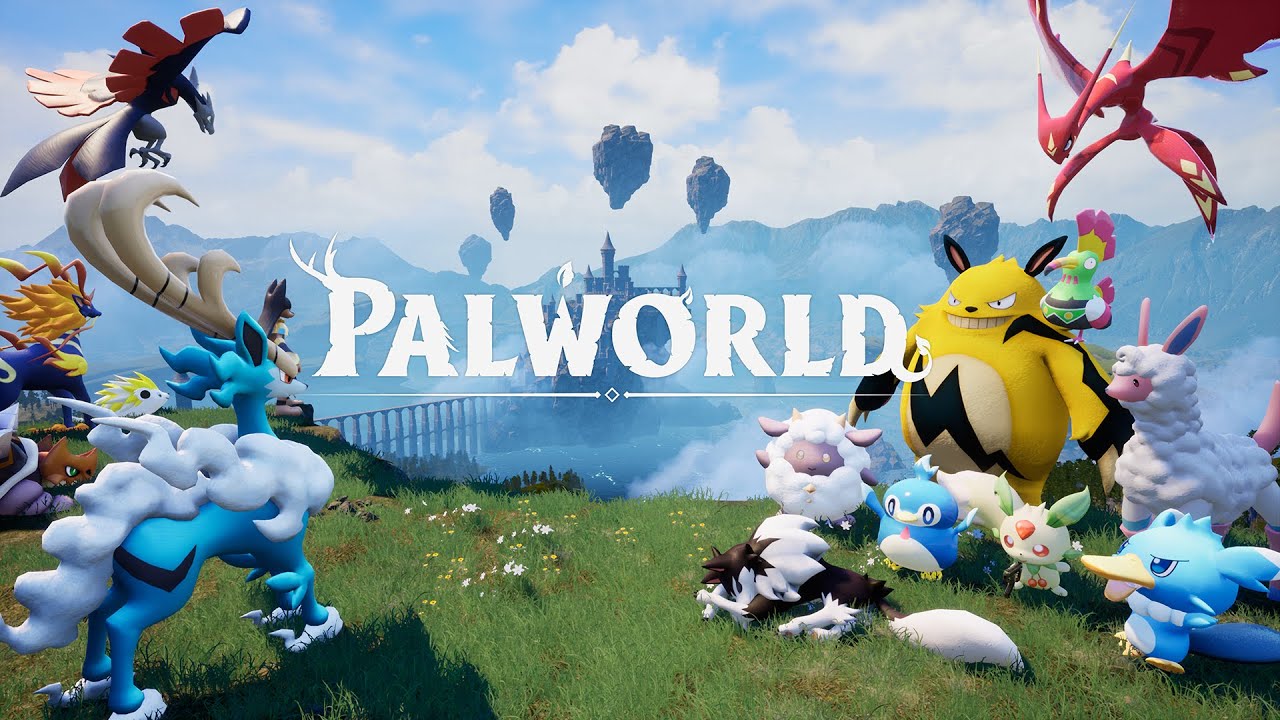
Japanese developer PocketPair released Palworld in Early Access on January 19 for the Xbox One, Xbox Series X|S and PC (Steam).
Having previously released titles such as Craftopia and Overdungeon, Pocket Pair has a track record in creating unique and unconventional titles by fusing existing game mechanics and assets. Palworld is PocketPair’s fourth title, and it seems to be their most eye-catching and polished work to date. Its development first started back in 2021, but how did Palworld come to be? We asked PocketPair’s CEO Takuro Mizobe all about Palworld’s development, including the hardships they faced and how they feel about the prospect of a PvP mode.
──I would like to congratulate you in advance on the Early Access release of Palworld! Please introduce yourself. (This interview was conducted on January 15.)
Mizobe:
I’m Mizobe, the CEO of Pocket Pair. Since its establishment, PocketPair has released three games, and Palworld will be our fourth release. I was originally an engineer in the web industry and did all kinds of work, including starting up businesses. But eventually, my love for video games brought me back to the game industry. After working on various titles, I’ve finally come to the point where I can work on a relatively large-scale game such as Palworld.

──How exactly were you involved in Palword’s development?
Mizobe:
We are just working on the credits now, but I was involved in Palworld predominantly as the producer. I dabbled somewhat in direction too, and towards the end of development, I also ended up being an optimization engineer for some reason.
──So producing, directing and optimization. Can you tell us about Palworld’s development team?
Mizobe:
At the time of Craftopia’s Early Access release, PocketPair had less than 10 employees. We started development of Palworld about six months after this, so initially, there were only 3-4 members on the team. Furthermore, they were all newly hired employees, so Palworld basically started out with an almost completely different development team to that of Craftopia.
Then, a year later, we had about ten people on board. In two years, the team suddenly grew to 20~30 people, and in the third year, I added another 10 to 20 new members. We kept making the development team bigger as Palworld’s completion seemed nowhere in sight. By the way, the art department makes up the largest portion of the team, including motion, background and 3D artists. We also hired more than five new engineers for the project, so the team ended up being quite big.
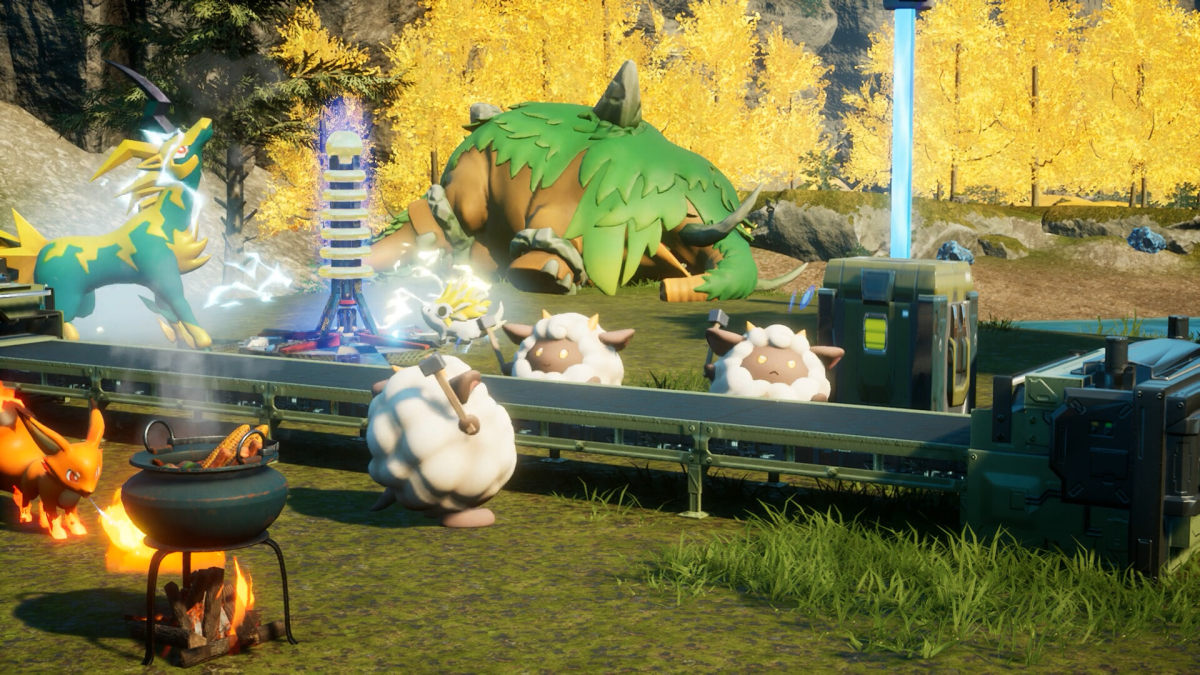
──How would you describe Palworld in your own words?
Mizobe:
Put simply, Palworld is an open-world, survival craft game with the added element of monster-taming/collection. It also takes significant inspiration from real-time strategy and automation games – you build bases, and your Pals work autonomously to support you. I think that these mechanics are quite rare in 3D games.
──I had the opportunity to play for a bit, and when I placed Pals at my base, they really did help out with work and collect resources for me.
Mizobe:
If I were to name a recent example, “Sons of the Forest” had the element of partners helping you out with building. It’s a similar mechanic to this.
──Palworld’s Steam description introduces some rather dark points. Is it possible to just be sweet to your Pals?
Mizobe:
I think it will all depend on the player and how they decide to treat their workforce while trying to survive. Some will be kind to the Pals because they’re cute, others will work them to the bone in order to lessen their own burden. The game allows you to enjoy either approach. For example, you can provide food and beds for your Pals, but you can also choose not to – the game will allow it. On the other hand, if you want to be affectionate to your Pals, you can care for them by building hot springs for them to relax in and petting them.
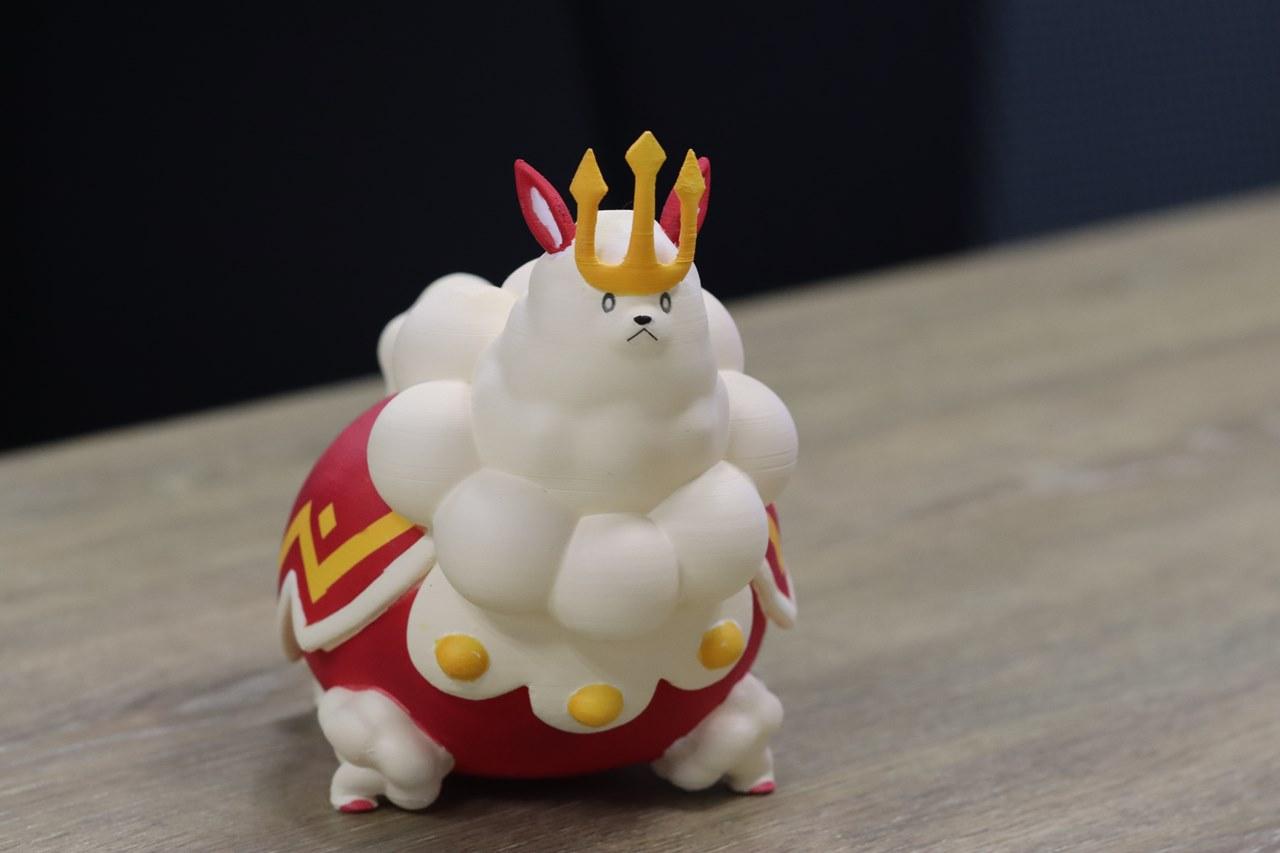
──As Palworld is centered around collecting monsters, there have been many reactions from users such as, “Will it be able to launch” and, “Will it cause controversy,” but what do you think about this?
Mizobe:
I’m aware that the Pokémon series is the overwhelming leader in the monster-taming/collection genre. In fact, Pokémon is so good that I’m afraid to even try to compare it to Palworld.
Pokémon first appeared when I was still a grade schooler, and it was like a social phenomenon. I adore the series too, and recent releases such as Pokémon Scarlet and Violet, as well as the open-world title Pokémon Legends: Arceus, have left a deep impression on me.
I can’t even imagine how difficult it must be to continue creating a series that has been adored by people worldwide for 30 years. I think that each Pokémon title is wonderful in how it conveys the spirit of its creators.
The concept for our Palworld originated from the thought, “Would it be possible to add monster collecting elements to the open-world survival craft genre?” And, although we did reference the Pokémon series as a great predecessor of its genre, Palworld feels completely different as a game, which I think people will realize as soon as they play it. I would even say that Palworld is a lot more similar to “ARK: Survival Evolved” in terms of game mechanics.
“Will it be able to launch” feels like a bit of an extreme question, but we make our games very seriously, and we have absolutely no intention of infringing upon the intellectual property of other companies. We have undergone legal reviews, and at this moment, there have been no specific actions taken by other companies. I know there have been all kinds of rumors floating about on the internet, but please rest assured and give our game a chance.

Palworld revolves around “automation with emotion”
──What is your understanding of the open-world survival craft genre? Were there any particular titles you researched as part of working on Palworld?
Mizobe:
I see the open-world survival craft genre as something that was derived from Minecraft. You used the word “research,” but this is a genre I’ve always adored, so I’ve played numerous titles up until now – such as Terraria, The Forest, Sons of the Forest, Conan Exiles, ARK: Survival Evolved, and of course, Minecraft. In terms of recent hit games, I’ve played Valheim, the indie title Raft, and Rust (although it is a PvP game). I’ve also played sandbox titles such as Astroneer and Scrap Mechanic, as well as games with novel mechanics such as Sunkenland.
Our previous title Craftopia was also an open-world survival craft game, so I started out on Palworld having accumulated significant knowledge on the genre. There are also many Steam users within our development team, so a lot of them have also played the titles I mentioned just now.
──As you’ve mentioned, there are many existing titles in the genre, but what is Palworld’s main theme as a survival craft game?
Mizobe:
Palworld was built on the hypothesis that having the monsters, Pals, act both autonomously and emotionally will result in a completely different playing experience than that of Craftopia.
One of the main themes of Craftopia was “automation,” and I think that it received recognition for the outrageous things users were able to do with it, many of which we, the developers, had not even anticipated.
With Palworld, our idea was to take this a step further, by aiming for “automation with emotion.”
Pals will rejoice from the bottom of their hearts if you give them food and pet them. On the other hand, they will cry and refuse to work if you’re rough with them. We are a small-scale indie studio, but we really wanted to go far and beyond in terms of expressions of emotion, and this was actually a big percentage of our costs. I mean, try to imagine making different petting interactions for over 100 Pals (laughs).
I also referenced RimWorld in this respect. In RimWorld, each resident acts autonomously, which can result in various events happening. You can have your whole colony burned down if you happen to come across a pyromaniac. People can start fighting due to elevated stress and end up losing an eye – there’s so many unimaginable things happening.
We wanted to introduce interesting aspects like this in Palworld, which is why we decided to incorporate the emotional and autonomous pals into an open-world survival craft game.
──What kind of events did you come across during test plays?
Mizobe:
In Palworld, when a Pal “slacks off” for over a certain amount of time, a bad event will occur. I encountered a bad event in which a stressed-out Fire-type Pal went on a rampage at my base, setting the house I had spent two hours building on fire. Basically, you can exploit the Pals, but you have to take care not to overdo it, and you need to set up an environment that does not let their stress build up too much.
──What kind of individual traits do the Pals display?
Mizobe:
The Pals differ in appearance and in areas of expertise. They have varying compatibilities with specific tasks – for example, some will be good at chopping down trees, others will be good at mining for rock. Also, each individual Pal has passive skills. This is something like randomly allocated enchantments, and this is what, for example, makes certain Pals hardworking and other Pals more prone to slack off. The passive skills of your Pals can be both beneficial and detrimental to your base.
──What are the game elements you consider vital for an open-world survival craft game?
Mizobe:
I may digress from the main point with this, but I think that a multiplayer mode is almost mandatory for a survival craft game. In a multiplayer PvE game, you can easily add a singleplayer mode without making big changes to the game’s system. But for PvP, if you think of it as, “It’s just players beating each other up, it should be simple,” and try to implement it without much thought, you’re going to have a hard time.
This is why, although it may be obvious, deciding whether or not to include PvP is the biggest fork in the road in development, as it changes your list of priorities entirely. For example, in PvP games, fast travel is usually severely restricted, but I don’t think the average user nowadays would be able to tolerate an open-world game without fast travel. These kinds of things make it really difficult to combine PvP and PvE in the same map, and it wasn’t until I tried doing it that I realized, “Oh, so that’s why other games don’t do that.” Trying to make PvP and PvE work with each other means developing a game with significant limitations in terms of game design – it’s a hard path to take.
With Palworld, we made the mistake of thinking we can “just casually add PvP later on.” However, in the middle of trying to do this, we realized how problematic it was going to be. From that point on, we rushed to make last-minute adjustments so that nothing goes against the game design’s basic premises. Even now, some inconsistencies remain in the game design, and we have to resolve them if we want a PvP mode release.
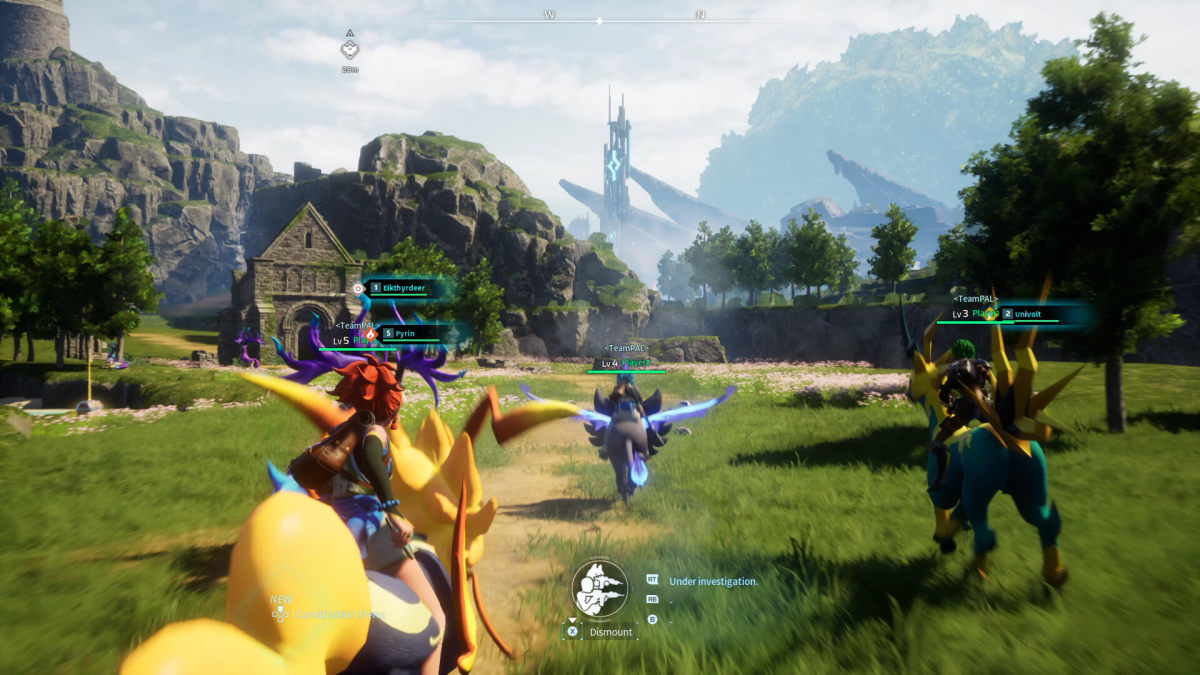
What PocketPair learned from their Craftopia days
──In broad terms, Palworld and Craftopia belong to the same genre. Craftopia is a title that lends itself well to expansion, so there’s been some people asking, “couldn’t you have implemented the ideas for Palworld into the world of Craftopia?” Can you tell us about why Palworld was made as a separate title?
Mizobe:
Craftopia is indeed a game that’s easy to build upon, and we are still in the process of updating it, but with the final version in sight, we had to narrow down its features.
I too love the “anything goes” aspect Craftopia is popular for, but at the same time, we had to be realistic about the trade-offs in terms of load etc., in order to finalize the game as a product. Also, since Craftopia is already quite complex as a game, adding new features to it would actually slow down the development process.
With the game concepts differing to such an extent, it was faster to create Palworld as a new, separate game. Adding more than 100 new Pals to Craftopia was, as you can imagine, not a very feasible option.
──Why did you decide to give Palworld an Early Access release?
Mizobe:
We decided on this 2 or 3 years ago, so I don’t think there was a very particular reason (laughs). However, we were kind of able to predict that the quality would not be worthy of a full release. Given the development period and scale of Palworld, we wanted to work on it while listening to user feedback, rather than release a final, complete game. Another big reason was that, based on our experience with Craftopia, we felt that Early Access releases allow us to make games in a way that suits us.
───There’s often disputes about whether it’s better to do an Early Access release or a full release when launching a game on Steam. So, PocketPair prefers the Early Access approach?
Mizobe:
I think it’s best to decide these things based on the title. As far as PocketPair games are concerned, I think we will be going for Early Access most of the time. However, if we were to make a strongly story-driven title or a linear RPG, we would want to put more emphasis on the creator’s individuality. For this kind of title, I think that a full release, in which the game is played in its completed state, would be a better fit than one that leaves things open to user opinions. On the other hand, as PocketPair is currently making titles in which it’s basically users themselves deciding how they want to play, I think that the Early Access approach is more suitable.
──From what I’ve seen so far, the quality of Palworld is far superior to that of Craftopia’s at the time of its Early Access release. Are you sure you don’t want to brag about this?
Mizobe:
Oh no, I must brag, by all means! Honestly speaking, when we released Craftopia, we weren’t able to strike the right balance. The Early Access release had many bugs, and some of them actually made things fun. However, there were also many bugs that were no fun at all and just caused dissatisfaction among players. This is something we’ve learned from. Also, at the time, Early Access releases were not so common, so we were kind of groping around in the dark with it. We didn’t really know what state a game needs to be in for users to accept it.
Now, in 2024, the concept of Early Access releases has fully ripened. Our goal with Palworld is to fix as many disadvantageous bugs as possible before the release, and then focus on making it a better game based on user feedback. We wanted to ensure a certain level of quality with Palworld – at the moment, it’s a lot more stable than Craftopia, but not as stable as, say, a full-priced AAA game would be.
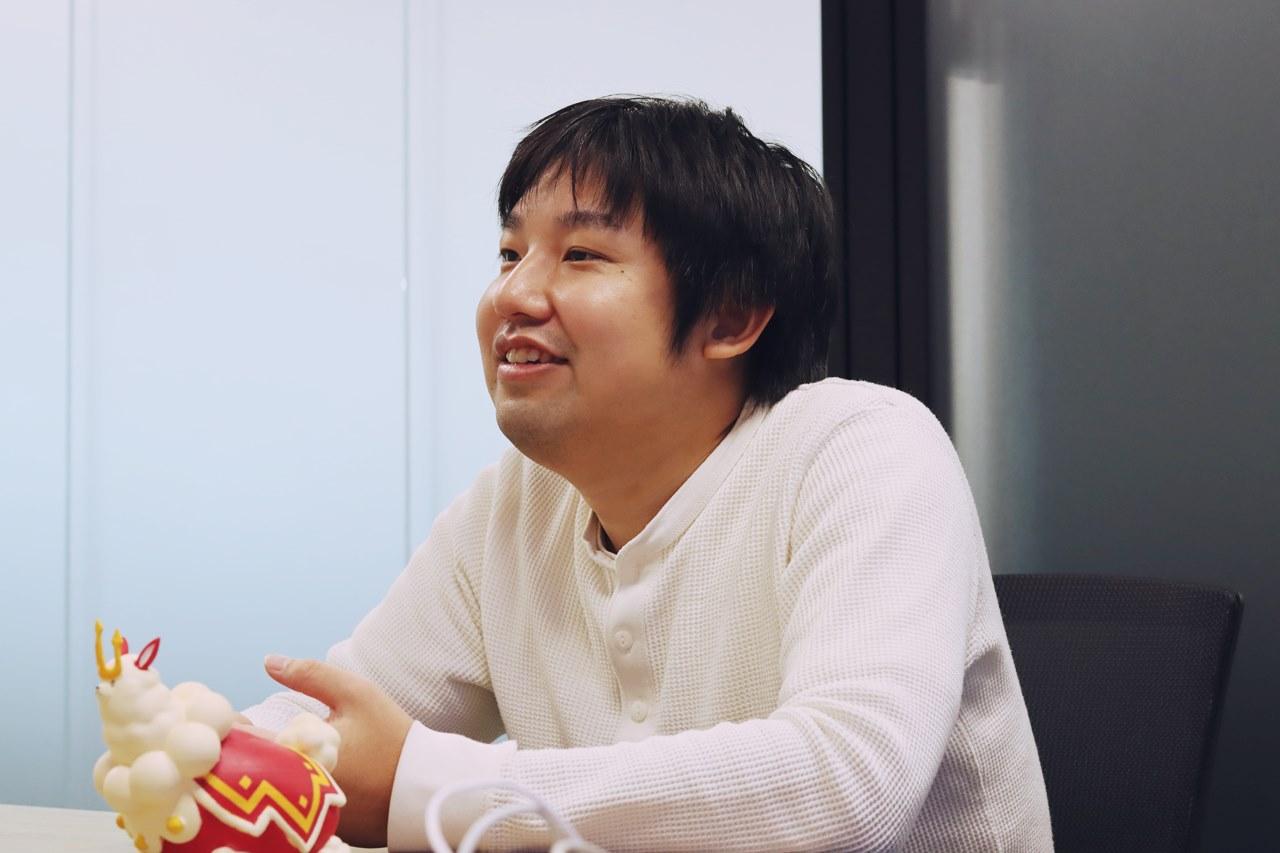
──That’s a unique way to put it! (laughs)
Mizobe:
As an aside, if you really don’t want bugs to occur, you have to make specifications that make it difficult for them to happen. For example, by limiting where bases can be built. In most survival craft games, you can place your base anywhere, but if this were to be allowed in Palworld, it would be very difficult to prevent bugs from happening due to Pals moving around freely and launching random attacks. For example, in the demo version of Enshrouded, a not yet released title, the locations where you can build bases are quite limited. While we thought that narrowing down the locations in this way would make things a lot easier, we also knew people would have more fun if they had some freedom, so we worked on Palworld carefully, while being particular about what bugs to allow.
──How would you describe Palworld’s current state in terms of progress?
Mizobe:
I think all the basic functions are set, so perhaps about 60% complete? The next phase is all about further perfecting the game. When we released Craftopia in Early Access, we really didn’t know anything, including what kind of game it was even supposed to be. But with Palworld, we know what kind of game we’re making. It’s a game in which you collect Pals, a game in which you fight bosses – a survival craft game. The important points that remain are how we’re going to implement PvP and to what extent we’re going to release new content. We’re also prepared to add new game functions, so we will observe user reactions and decide what to prioritize based on what everyone wants.

The hardship that went into making Palworld
──You had been releasing information about Palworld at its various stages of development, and in the end, January 2024 was the date decided for the Early Access release. Was this according to schedule?
Mizobe:
No, not at all. Palworld was first revealed at the Indie Live Expo held in January 2021, and the demo we released then was made over the course of three months. At the time, the initial goal was to complete the game in about a year. This was the estimate we came up with based on our experience with Craftopia.
However, we then saw that after one year of working on it, it was still far from being complete. We realized that if we wanted to make the game properly, it would never get done, so we added more staff and extended our schedule to August 2023.
But even after working on the game until August 2023, the game was still in a state that would make users furious with us. There were many funny bugs, as well as bugs which were no fun at all, and the Dedicated Server was incomplete. We knew that Palworld would be much more fun if a lot of people could play it, so we wanted to release it with multiplayer available. Considering other improvements, even January 2024 was a tight deadline.
Making games is hard, and you must set deadlines. We did initially set the deadline to August last year, but this wasn’t enough to get everyone to perceive it as a “real deadline,” so people weren’t that motivated (laughs). But then, in November, we conducted a network test – and this is the stage users get involved in, so I think this finally gave us a sense of a real deadline. We felt January was doable, and it was also a good timing in terms of marketing, so we decided to proceed with January 2024 as our last line of defense.
──Craftopia was characterized by its heavy use of existing assets, but Palworld seems to use original assets a lot more. Did you have a change of heart?
Mizobe:
For Palworld, we made loads of original assets.
Honestly, we wanted to use as many existing assets as possible, and we were using them when we started out. But in the end, we had to make many original assets. We had no other choice – for example, all the Pals in Palworld have unique forms and are different from existing animals in various ways. For example, even if a Pal looked similar to a real-life deer, if the shape of its antlers is different, we can’t reuse the motions. Furthermore, there are many Pals for which we can only shrug if asked for a real-life animal counterpart – Pals that don’t look like anything that exists in this world. For these, we had to make 3D models. With reluctance, we had to give up on the “asset-driven” approach we established with Craftopia and make the models and motions on our own.
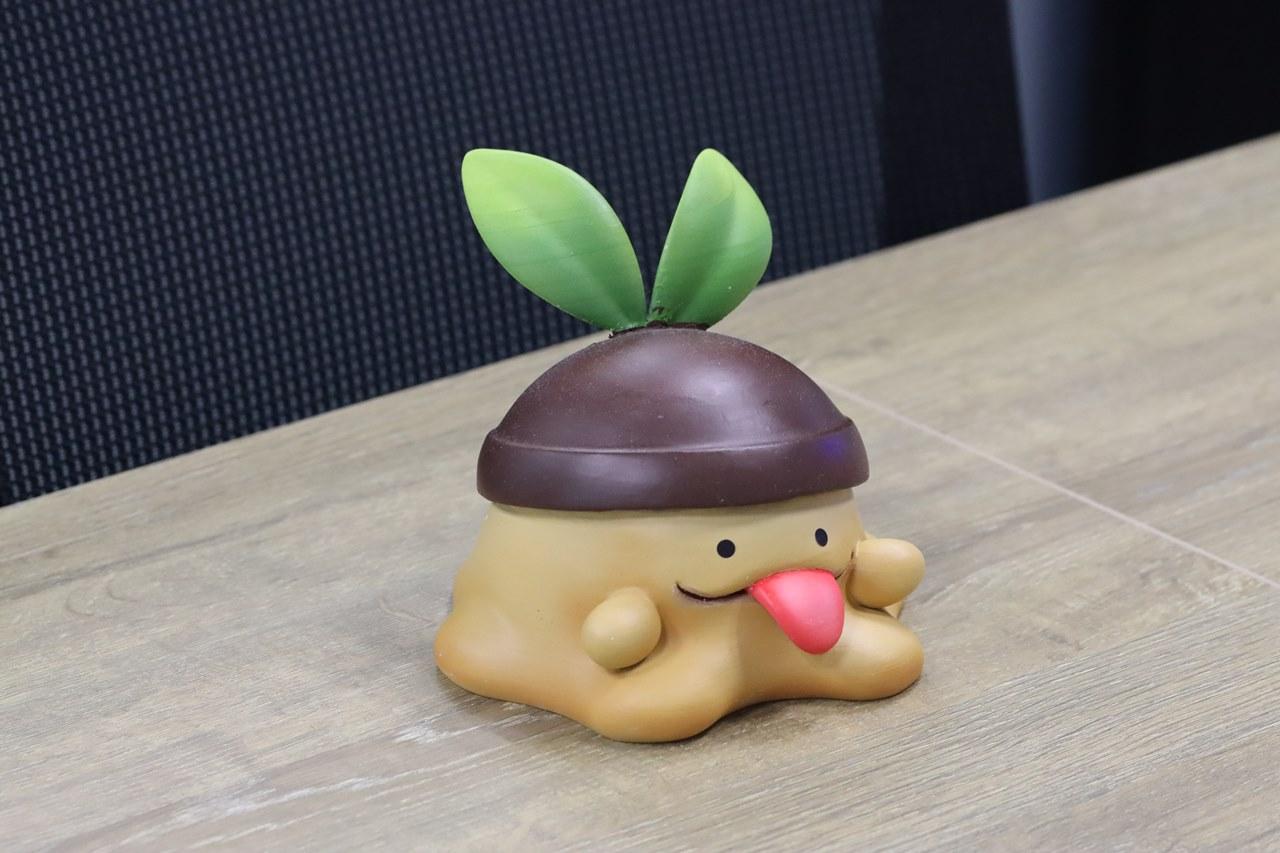
──Was there anything particularly difficult about Palworld’s development in a technical sense?
Mizobe:
There were just so many things.
Open world games are common, but if you think about it, most of them are singleplayer games. Recently, there has been an increasing number of open-world survival craft games, so this isn’t only the case with Palworld, but making an extensive open world work properly with multiplayer is quite difficult. To make matters worse, the world of Palworld is inhabited by several hundred wild Pals, who all move in orderly sync with each other. ARK: Survival Evolved similarly has dinosaurs going about in multiplayer mode, but they are not synchronized to that extent. In Palworld, as each player places a base on an open field, the Pals need to move around the base in a nice, autonomous manner. As an aside, working on Palworld made me realize just how unique and unprecedented ARK: Survival Evolved is and how difficult it must have been to make.
──By the way, for Craftopia, you used Unity, but for Palworld, you went with Unreal Engine.
Mizobe:
Yes, Unity has its benefits, and so does UE. I felt that, for making Palworld, Unreal Engine was a more suitable option. Unreal Engine has all the basic things for an open-world game covered, and I found it to be more suitable for a comparatively heavy game. On the other hand, one of the biggest globally successful open-world games, Genshin Impact, was created with Unity. Choosing a game engine should be a comprehensive decision based on what kind of game you’re making, what country you’re making it in, whether or not it’s multi-platform, and many other factors, so I think it’s a decision that should be made for each title individually.

Palworld’s tremendous global popularity
──Palworld seems to be receiving a lot of attention both in Japan and from overseas, but how are things really? How many times have you been added to people’s Steam Wishlists as of January 15?
Mizobe:
It’s about 1.4 million right now (1.8 million as of 1/19). For Craftopia, the figures were somewhere between 100,000 and 200,000, so it’s a tremendous increase. As for the demographics, Japan probably accounts for less than 10% of the Wishlists. Palworld has become quite the global title, with the largest percentage of Wishlists coming from the U.S. I think the ratio probably reflects the general proportion of Steam users.
──What do you think contributed to the global popularity? Were there any marketing approaches you felt had a particular effect? Such as appearing at Summer Game Fest, making TikToks for the European/U.S audiences and other methods?
Mizobe:
I don’t think the individual marketing strategies had a lot to do with it. I think it just means that Palworld is the kind of title that can be accepted globally. It’s possible to talk about the success of individual marketing measures on a small scale, but 1.4 million Wishlists is pretty big. In this case, rather than the success being due to effective marketing strategies, I believe that as a game, Palworld simply has the potential to expand on a global scale.
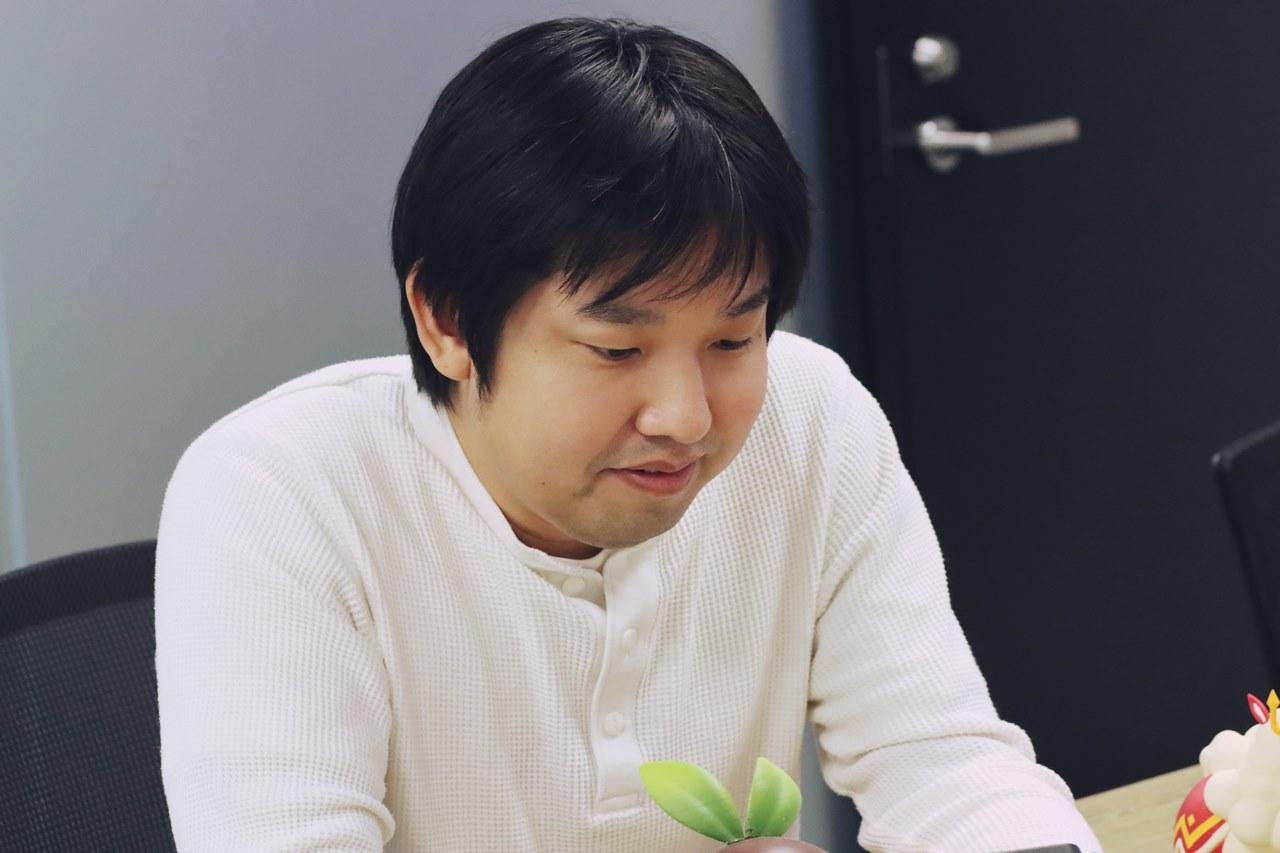
──The Early Access release date for Palworld is right around the corner, but what direction do you plan to develop the game in post-release?
Mizobe:
I’m not sure how about how much I should say before the release, but with Craftopia, we thought we had made something good. At the time, we thought it was the best game we could make, but now, with Palworld, I think we have made something truly extraordinary. We made it by fusing various elements from other games, but we ended up with something completely new, which I think is amazing. I think we have created a title that many people will be able to enjoy, and I feel very happy that we were able to create such a game in the first place.
I’m confident to the extent that, if Palworld doesn’t become a hit, I’m not sure what we should even make in the future as a company. We won’t even be able to continue as a company. We polished Palworld to the point that we want to release it at any cost, despite the risks. Of course, the pioneers of open-world survival craft games are all amazing titles that have been extremely successful, so I don’t know if we can match them. However, given the right timing, I think we have created something that could become a huge hit.
──In the Early Access launch Q&A, you mentioned that you’re still considering future PvP elements, but what kind of content are you envisioning at the moment?
Mizobe:
PvP is really difficult. First of all, we need to think about why we are introducing PvP to Palworld. To begin with, there are many other games that offer a fun PvP experience, so we need to make sure that there is a reason for Palworld players to play PvP. Of course, using Pals you caught in battle is one unique point, but only games that give players a good reason to play can survive in the long term. In this sense, I think it’s a very harsh territory. This is why PocketPair is not very optimistic about PvP. I said earlier that we have created a great game, but with PvP games, you can’t know if you’ve failed or succeeded until the very end. I think that our chances of success are below 10%. That’s how high the hurdle is to succeed in PvP.
When considering the reasons to introduce PvP to Palworld, the first thing that comes to mind is the battle format of pitting Pals against each other. This could involve either Pals fighting alone or alongside humans. Another thing to consider is format, such as a competition format in an arena-like setting, or a format in which players can freely compete anywhere in the entire map in real time. In the case of the arena format, I think that real-time action battles would be the first thing that users would imagine. However, we are also considering an asynchronous battle pattern in which pals fight each other automatically. There are a lot of technical details to be discussed, but we are also considering a format in which pals are registered in the arena and users can freely choose to fight, which would lower the barrier to entry and allow more casual PvP.
───So it’s still all under consideration, I’m looking forward to the updates.
Mizobe:
Yes, I hope that we will be able to implement a PvP model that is unique to Palworld and will not be short-lived. Earlier, you asked me how I would like to develop Palworld, but first and foremost, I want it to be a game in which catching Pals is fun. After that, I want to make a successful PvP mode as the “ultimate” goal.
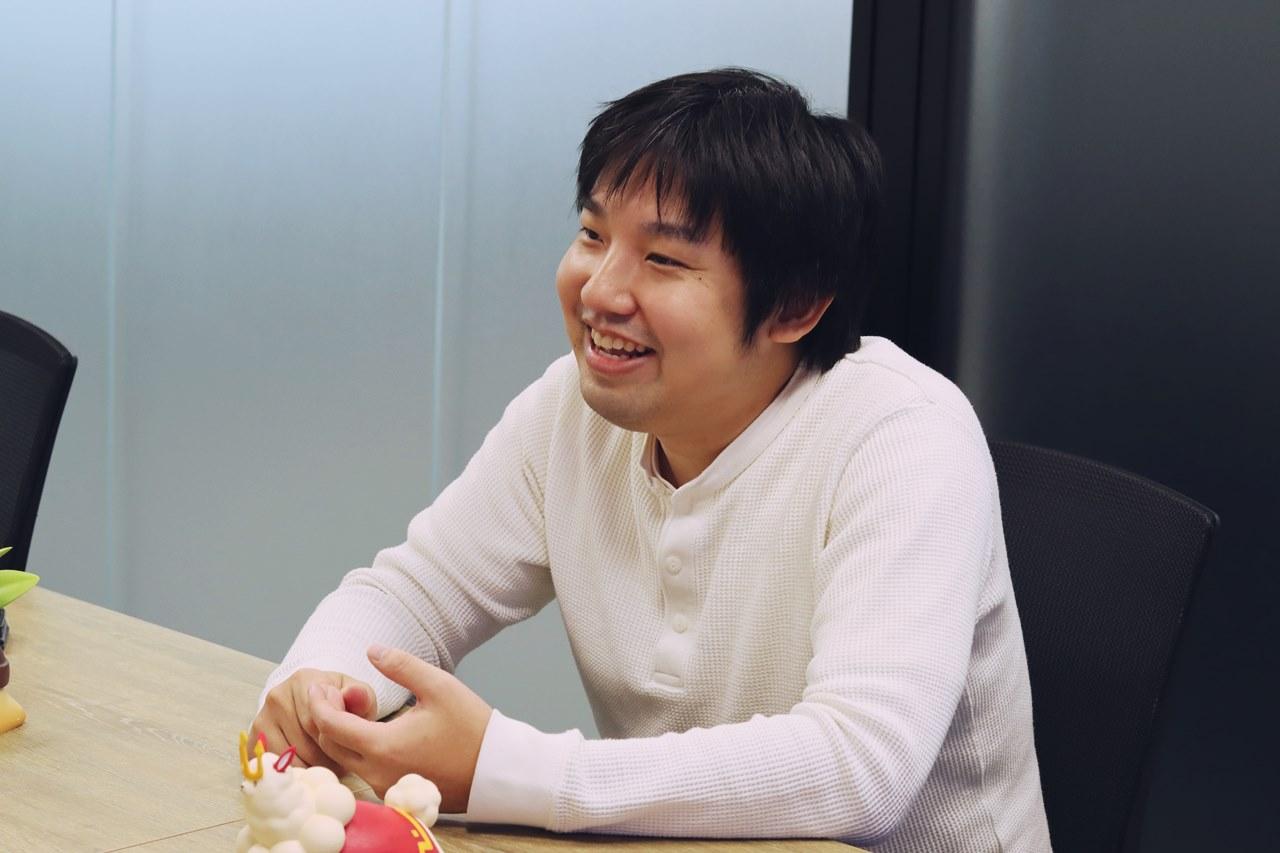
───Thank you for your time!
Palworld is available for the PC (Steam), Xbox One and Xbox Series X|S.
[Writer, Editor: Keiichi Yokoyama]
[Interviewer, Editor: Ayuo Kawase]
[Translator: Amber V]
The original Japanese interview can be found via Automaton Japan.


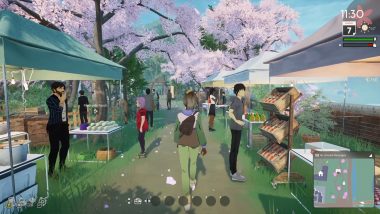


battle royal in big map only arc 2-3 pal max !!!!amazing